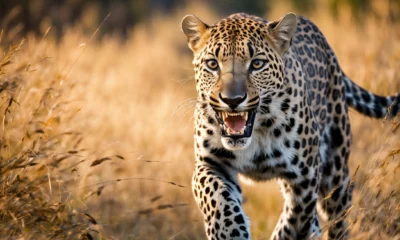Camouflage
Uncovering the Secrets of Camouflage: How Animals Hide in Plain Sight

Camouflage is a fascinating phenomenon that allows animals to blend in seamlessly with their surroundings, making it difficult for predators to spot them. From the stripes of a tiger to the spots of a leopard, camouflage plays a crucial role in the survival of many species in the animal kingdom.
But how exactly do animals achieve such effective camouflage? The answer lies in a variety of different strategies and adaptations that have evolved over millions of years.
One of the most common forms of camouflage is known as background matching, where an animal’s coloration closely resembles its surroundings. This can be seen in creatures like the chameleon, whose ability to change colors allows it to blend in with the foliage around it. Other animals, such as the snowshoe hare, change their fur color with the seasons to match the snow in winter and the foliage in summer.
Another form of camouflage is disruptive coloration, where an animal’s pattern breaks up its outline and makes it harder to distinguish from its background. This can be seen in animals like the zebra, whose stripes help to confuse predators by creating an optical illusion that makes it difficult to focus on a single individual.
Some animals take camouflage to the next level with mimicry, where they imitate the appearance of another object or organism to avoid detection. The stick insect, for example, looks remarkably like a twig, while the leaf-tailed gecko blends in with the foliage by mimicking the shape and color of a leaf.
In addition to coloration and patterns, animals also use other tactics to hide in plain sight. Some species, like the octopus, have the ability to change both their color and texture to match their surroundings, while others, like the cuttlefish, can create an optical illusion by rapidly changing the patterns on their skin.
Overall, the secrets of camouflage are a testament to the incredible adaptability and resilience of animals in the natural world. By mastering the art of blending in with their environment, they are able to evade predators, hunt for prey, and survive in some of the most challenging habitats on Earth.
As researchers continue to uncover the intricate mechanisms behind camouflage, we gain a deeper understanding of the extraordinary diversity and complexity of the animal kingdom. From the savannas of Africa to the depths of the ocean, camouflage is truly a remarkable tool that allows animals to thrive in their natural environments.








